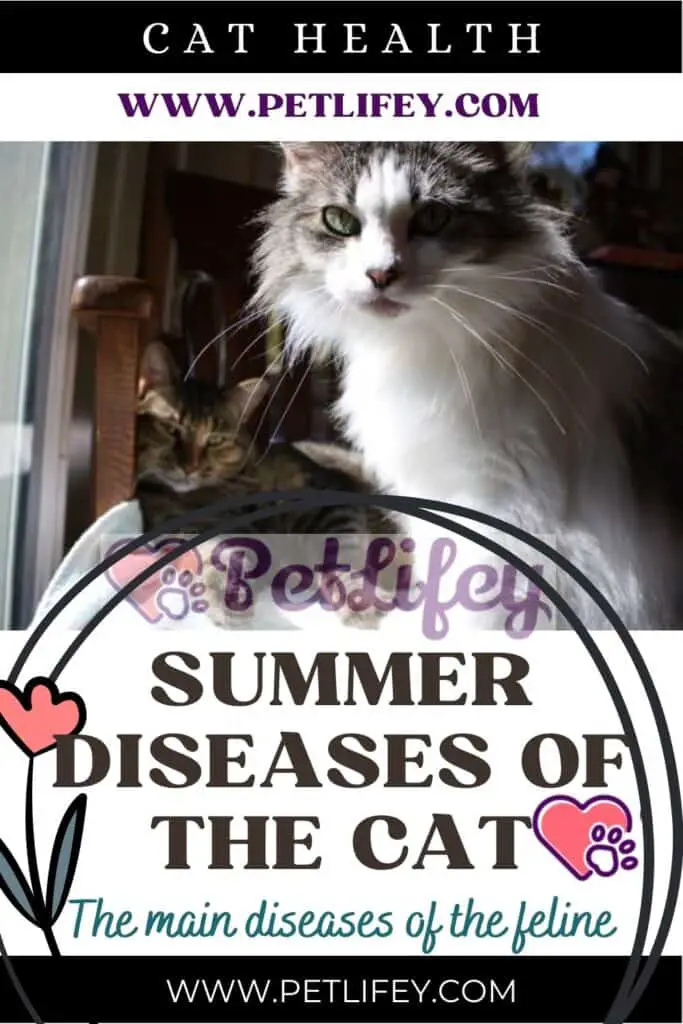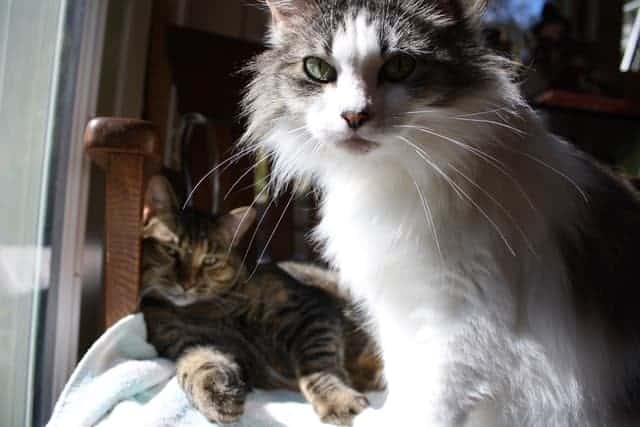
Summer diseases in cats concern the period that begins with spring until all summer. Let’s see what they are and how to avoid them.
The cat, like all animals, is prone to diseases regardless of the season in which it is found, but some diseases are more prone to develop in the summer period. This condition occurs due to high temperatures and humidity.
In this article we will deal in particular with the summer diseases in cats, what they are and how we can avoid complications for our furry friend.
Summer diseases of the cat
Taking care of our furry friends is our responsibility and this applies throughout the year and not just in certain seasons. And there are, however, particular periods of the year when the cat needs particular attention, regarding certain pathologies.
Although it can be said that the cat is a shy animal and the popular cliche that the cat has seven lives, this feline in front of diseases like the ones we are going to treat, cannot hide the symptoms and its discomfort. The diseases we will discuss in this article are mainly three and they are: tularemia, cat dermatitis and gastrointestinal infections.
Tularemia
Particularly in the summer, the cat is subject to tularemia, a very rare infectious disease that usually attacks the skin, eyes, lymph nodes and lungs. The cause of tularemia, also called “rabbit fever”, is the bacterium Francisella tularensis. It primarily affects mammals, particularly rodents, rabbits, and hares, although it can also affect birds, sheep, and domestic animals, such as dogs, cats, and hamsters.
Tularemia is transmitted to humans in various ways, such as insect bites and direct exposure to an infected animal. Bacteria are mainly spread from one animal to another via ticks, which acquire infection by feeding on infected animals or birds and could pass the bacteria on to other animals at any point in their 2-year life cycle.
A mild infection may not cause noticeable symptoms while signs of a more serious infection include dehydration in the cat, high fever, swollen lymph nodes, ulcers in or around the mouth, and jaundice. If the mode of transmission was through the skin, there are usually skin ulcers and swollen glands.
If the bacteria were ingested, there could be a throat infection, abdominal pain, diarrhea, and vomiting. The veterinarian is able to diagnose tularemia through a specific antibody test for F. tularensis, once ascertained he establishes the treatment which consists in the use of antibiotics, where the disease should not be taken into consideration by neglecting the treatment, the mortality rate gets high, if the animal is symptomatic it is very important to see the vet.
It is possible to do some prevention to avoid tularemia by trying to: use insect repellent outdoors, near places where there are rabbits or rodents; use a flea and tick pesticide for pets; keep the cat away from dead animals.
Sun exposure diseases
If we imagine a cat in our mind, the image of the feline lying in the sun emerges. in fact the cat loves to expose itself to the sun’s rays, perhaps in a beautiful lawn in the open air. This condition is pleasant for the cat and also for us to observe him while enjoying a beautiful day is certainly relaxing.
But beware of the effects of the sun on the cat’s skin. The sun’s rays play a fundamental role in the metabolism of living beings, including that of cats, making a good contribution of vitamin D, excellent for the absorption of calcium and the formation of bone structures.
Now through moderate exposure of the cat to the sun, the effects of the latter on the feline’s skin are usually very beneficial for his health. But excessive exposure to solar radiation can cause severe damage to cellular components, leaving them more vulnerable to numerous diseases.
In short, the sun’s rays are absorbed by penetrating through the epidermis and are transmitted to the deeper areas of the skin. By causing a series of biochemical reactions that interfere with cell structure and metabolism. Some problems that can arise from this situation are:
- cat burns: that is the most immediate and visible solar damage on your cat’s skin. The cat can suffer from superficial or deep burns, depending on the degree of damage in the epidermis and dermis;
- solar dermatitis – inflammation of areas exposed to the sun, hair loss and skin is red due to irritation;
- skin cancer: abnormal growth of malignant cancer cells. Excessive exposure to solar radiation can lead to cancer in the cat’s skin. It is essential to use sunscreen for our cats, before letting them expose themselves to solar radiation.
Gastrointestinal infections

In summer, for us humans as well as for animals it is essential to make a change in diet, to approach nutritious but less heavy and more digestible foods. Gastrointestinal upset can cause dehydration, malnutrition, and other serious health problems, so it’s important to recognize the symptoms in your cat and contact your veterinarian.
One piece of advice in particular, which veterinarians tend to emphasize and that it is necessary to avoid autonomous changes in the cat’s diet, especially in summer and above all to avoid giving the pet what remains of our meal: its nutritional needs and its system. digestive are totally different from humans. A specialist can recommend the best solution for your feline.






